How MGC is STEAM Powered,
but not from coal…

How MGC is STEAM Powered,
but not from coal…
By Andrew Vance, Sustainability Coordinator
Melbourne Girls’ College was started as a Science and Technology school for girls, transitioned to a Leadership centre and has recently refocused as a STEAM school (Science, Technology, Engineering, Arts and Mathematics). MGC is a world recognised leader in environmental sustainability and has now set its sights on becoming one of the first carbon neutral schools in the country.
In 2015, it became the first Australian recipient of the Zayed Future Energy Prize, which has enabled the school to install grid-connected renewable energy generators that utilise solar, hydro and human power. See video outlining project:
In 2013, it was recognised as the state’s Resource Smart School of the year and has been awarded prizes in student, teacher and community environmental leadership, water and energy conservation, biodiversity management and waste awareness.
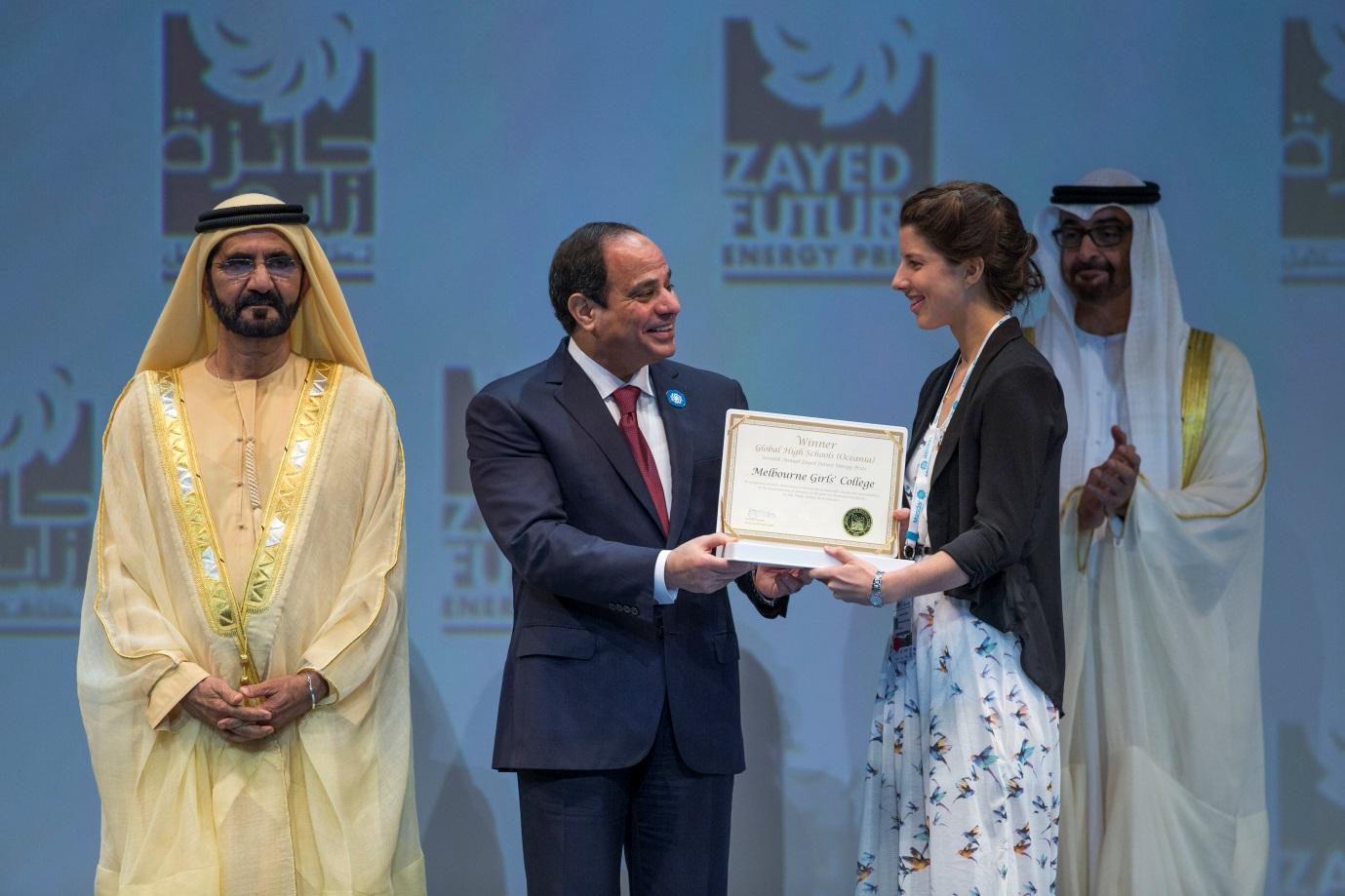

MGC’s reputation as a world leader in environmental education has been built by our alumni. The vision shown by key students over the years has contributed to an environmental policy that has influence across the curriculum, day to day operations and community outreach. Our 2004 Environment Captain, Renata Cummings, hosted MGC’s first student environment conference in 2003 in the library with a small audience of enthusiastic enviro reps, which has now grown to an annual tradition which draws in high profile speakers, enthusiastic students from within MGC and over 100 student environmental leaders from a wide range of public and private schools across Melbourne.
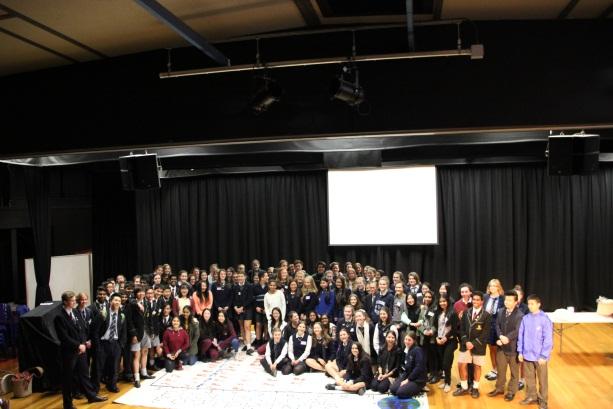

The vision of Bella Vadivaloo and Emma Lewis, which began with a 2007 year 9 World Of Ideas project on reconciliation, led to the establishment of a bush tucker garden full of locally indigenous plants (with a curriculum unit linking Wurundjeri culture, agriculture and biodiversity). This is celebrated and expanded annually with an acknowledgment of country ceremony that involves dancing and horticulture workshops led by Wurundjeri community leaders. The bush tucker garden is a joint project with Greening Australia, City of Yarra and other community members that aims to teach students and the wider community about the ecology and traditional cultural uses of indigenous plants, while at the same time restoring the Yarra river habitat corridor for wildlife.
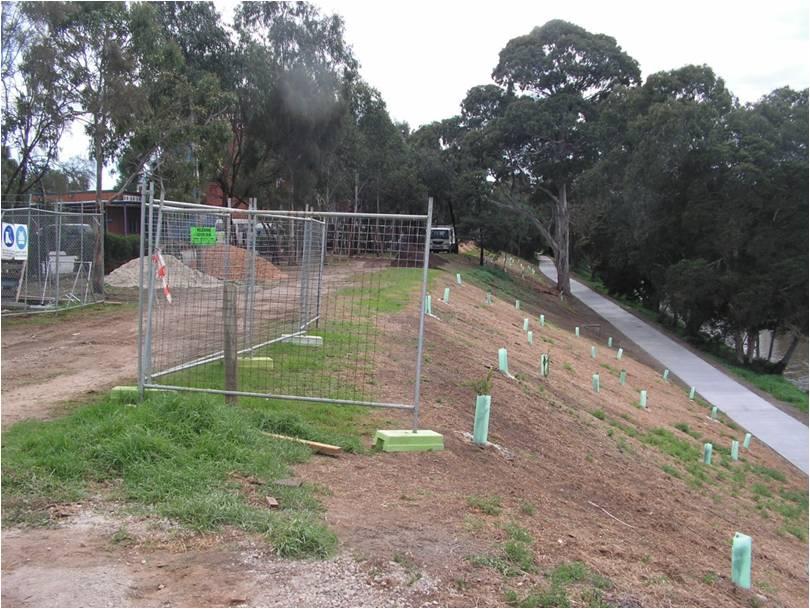
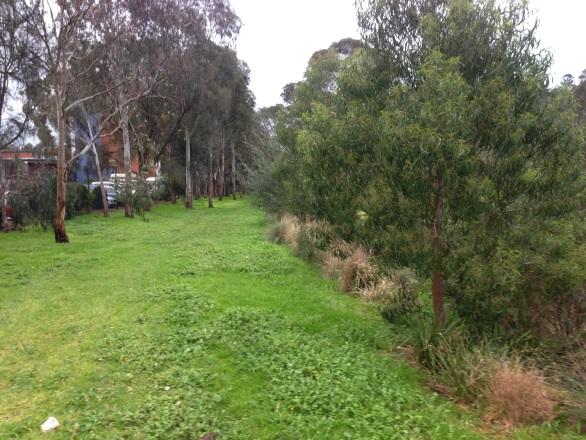
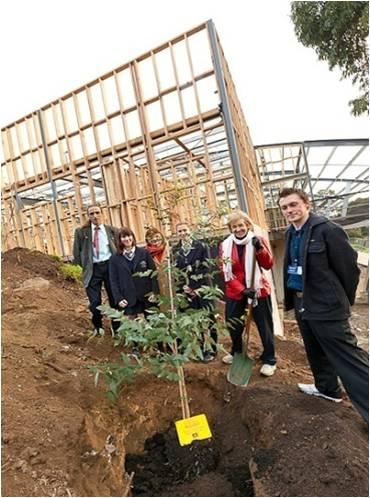
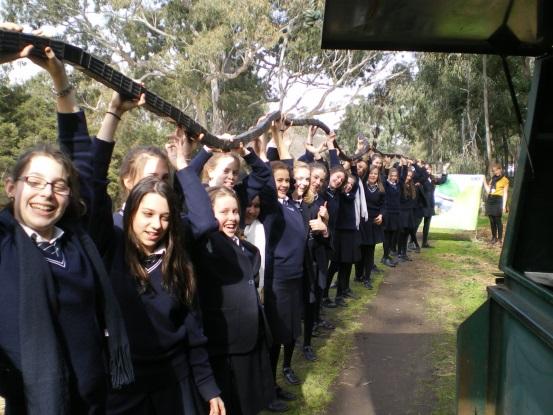




MGC Alumni, many of whom were inspired by environment team projects, have become leaders themselves in the environmental field, with several alumni returning to MGC as mentors for our current students as coordinators with the World Wide Fund for Nature, Australian Youth Climate Coalition, Engineers or industrial designers working with our current students on environmental projects.


We have been visited by world leaders including Dr Jane Goodall in 2011 and The Australian Climate Commissioners, Professors Tim Flannery, Veena Sayajwhalla and Lesley Hughes in 2012.
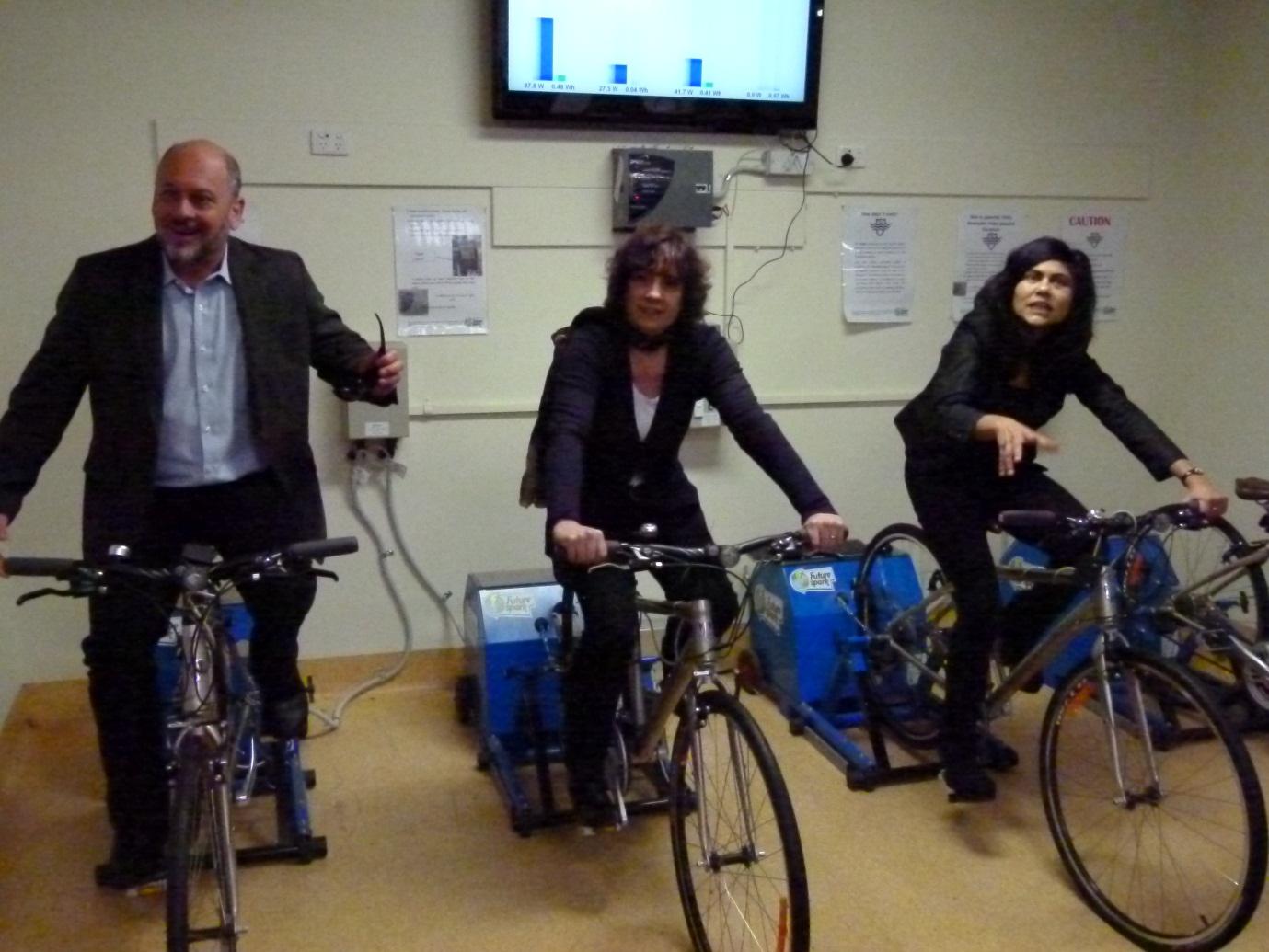

Energy
To reach our ambitious goal of becoming carbon neutral by 2020, we need your help. While the Zayed Future Energy Prize has given us a huge step in the right direction, most of the grant has been spent on interactive low-yielding energy generators that maximise educational value and hands-on interactivity to engage people with renewable energy rather than more productive, but ‘out of sight’ generators like solar panels or wind turbines. This was a strategic decision as the aim of the ZFEP is to inspire young people around energy and we know that the only way to address climate change is to look at how humans use energy. Conservation campaigns around water use have been highly successful around the world largely due to the fact that saving water is a more tangible thing to do. Most people could immediately picture a little bit of water, 10L or even 100L. Can you imagine a watt hour, a kilowatt hour or a megawatt? By riding on one of our pedal generators or ergo machines, students and visitors to MGC can now physically experience what it is like to pedal a watt. By pedalling on a bike at the moonlight cinema, you get an insight into how hard it is to pedal enough energy for a latte, to run a hair dryer or power your smart phone.
MGC currently hosts about 1,400 staff and students daily and remains open for sporting and other community groups after hours and across weekend and school holidays, drawing a large amount of electrical power from the grid. Our average daily usage during school term is a megawatt hour (1,000,000 kilowatt hours), while our average daily generation is a tenth of that. This is a huge amount of electricity to generate on site or to purchase from green sources, however it means that by pledging to become a carbon neutral school, it means that we will be making a meaningful impact in the community. The Zayed Prize has enabled us to install the 126 panel, 33kW solar array you see below on the gym roof. We are now looking to crowd fund an expansion to the array by asking community members to sponsor an additional panel.

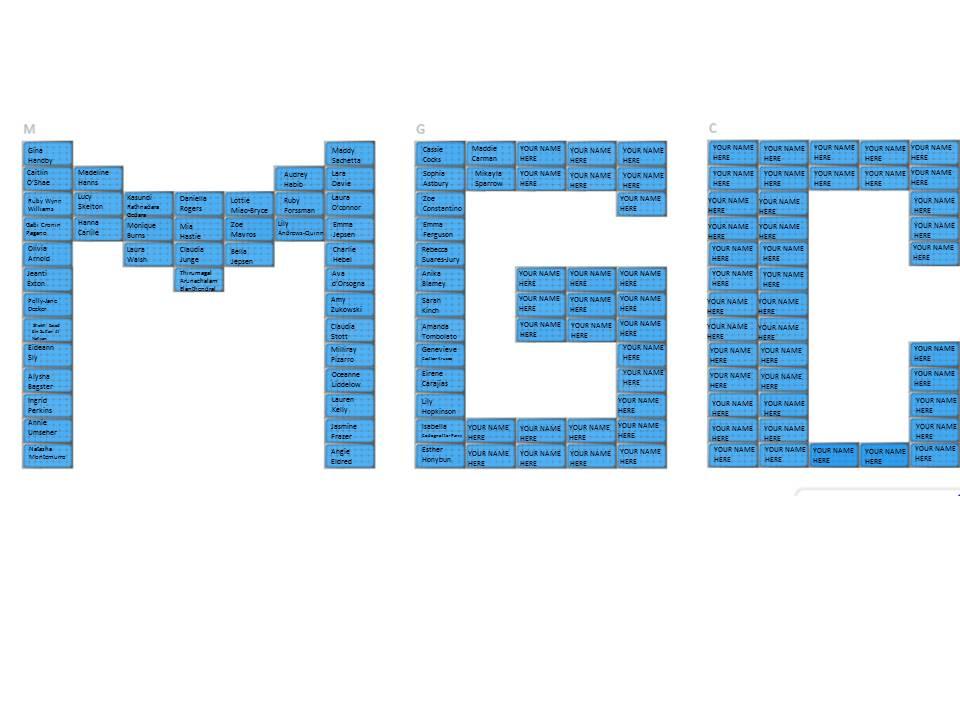


By sponsoring a panel, you’ll also make a practical contribution to girl’s education that simultaneously improves the environment at the same time. We have currently named one panel in honour of each of the fantastically committed 2015 student Environment Team members and sold an additional 10 panels to community members. Sponsors can now log into the system and investigate how much power they are currently generating, how much energy they have personally generated in the last week, month or year and hence how many Carbon Dioxide emissions their actions have saved, how many trees they have been effectively planted, cars taken off the road etc. to look at the system right now, click here.
This investment continues to give back over the life of the product. It is cutting edge technology that not only acts as an inspiring teaching tool, but also a practical piece of equipment that will provide returns on your investment in terms of carbon abatements and school energy savings.
Your contribution not only fuels the electricity that runs the tools in our students’ classrooms, it is literally improving their future.
For your investment, you can choose the location of your panel on the roof and monitor that panel from the Enphase website, Google Earth or the MGC webpage. You can select the interval at which you would like to receive email updates with the progress of your panel or you log into the system and simply stare at the numbers ticking over all day long.
All donors will receive an annual report on the output of their panel, detailing the energy fed into the grid, emissions saved, equivalent trees planted and other relevant data. Donors can of course choose to be anonymous.
All donations made go to the MGC building fund and will go towards the expansion of the existing solar array. All donations are tax deductable.
Donations can be made via this link.
The cost of an individual panel is $450
Individuals or groups are able to purchase panels. Panels can be purchased on behalf of businesses, individual students, families or whole classes. If you would simply like to make a donation so that we can expand the array, but do not wish to sponsor a single panel, simply enter the total amount to sponsor under “other” on the Trybooking link above.
The renewable generators that we have installed on site include:
1. An interactive ground mounted solar array that connects direct to a water feature (named salty the seal and designed and built by industrial designer and MGC alumni Kiran Sohanpal) allows students to change the angle and orientation of the panel and see the change in power demonstrated by salty’s spout into the pond:


2. A hydro turbine that runs a 12m pipe down the middle stairwell of the main building integrating a solar pump to return water to the roof and a peleton wheel to harness the falling water. This display demonstrates to students that energy can be stored not only in batteries but also as gravitational energy which is converted in electrical power and made available to students via a USB charging wall so that they can power their devices by 100% green energy!
3.
Never miss valuable news and alumni events. Simply update your details on our Alumni Registration Form.
To advertise in the MGC Alumni Association Newsletter, please email us at alumni.board@mgc.vic.edu.au.